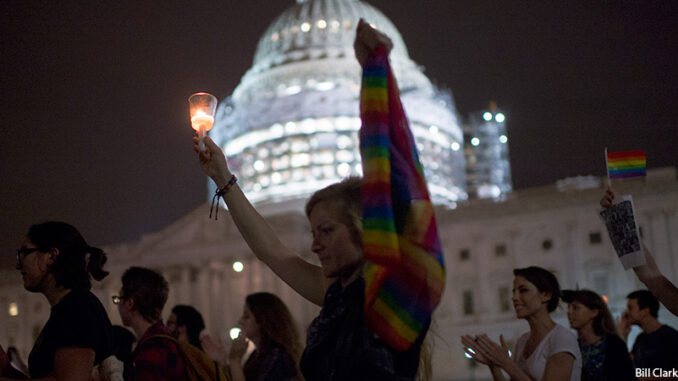

While gun control has always been a hot topic, the debate is now reaching a new boiling point. Three days after the mass killings in Orlando on Sunday, June 12, Democratic members of the U.S. Senate staged a filibuster while reintroducing two gun control proposals: 1.) restricting those on terror and “no fly” watch lists from obtaining a gun and 2.) enacting universal background checks for all gun purchasers.
New Developments: As of this writing, Democrats in the House of Representatives are staging a literal sit-in on the House floor.
Despite the fact that it is not in the Constitution nor part of formal Senate rules, the filibuster is an important and significant practice of our legislative branch of government. So what is it, when did it start, and how has its use changed throughout history?
Early Days of the Filibuster

The practice of the filibuster can be traced back to ancient Rome, where all proceedings had to conclude by nightfall. Cato the Younger, in opposition to Julius Caesar, merely spoke until sunset to delay a vote. In the early days of the United States Congress, before voting on whether to enact a bill into law, both the Senate and the House of Representatives would engage in debate until someone made a “previous question motion,” a formal action intended to call for a vote. The motion only required a simple majority (half plus one, which in the Senate, is 51).
In 1806, in an effort to simplify its rules, the Senate eliminated this rule because it was said to be redundant. The deletion of this rule unintentionally opened up a way for the minority voice to exploit the limits on debate. This allowed a senator (or series of senators) to stop legislation when they didn’t have the votes to officially do so. In 1917, during the Woodrow Wilson administration, the Senate adopted the rule of “cloture,” which meant senators who opposed a measure could talk as long as they wanted, unless two-thirds of their colleagues voted to cut them off.
The Modern Era
Invoking filibuster is not a usual occurrence and often considered an “extraordinary measure.” In the 1930s, Louisiana senator Huey Long was successful in using the filibuster as a way to oppose bills he believed favored the wealthy over the poor. In 1964, a group of southern Democrats staged one in opposition to the Civil Rights Act of 1968 (despite being ultimately defeated 71 to 29). Strom Thurmond of South Carolina holds the record for longest filibuster (24 hours and 18 minutes) with his own opposition to Civil Rights in 1957 (also defeated).
Related: Learn more about politics and government by visiting the Election Central Web site.
In 1975 the process changed, when the Senate adopted Rule 22, which established a two track system. Before this time, all bills were on a list where it was impossible to consider the next bill until the one before it had been resolved. The new system allowed filibusters on happen one track and regular business to continue on the other. The two-thirds vote was also changed to three-fifths.
